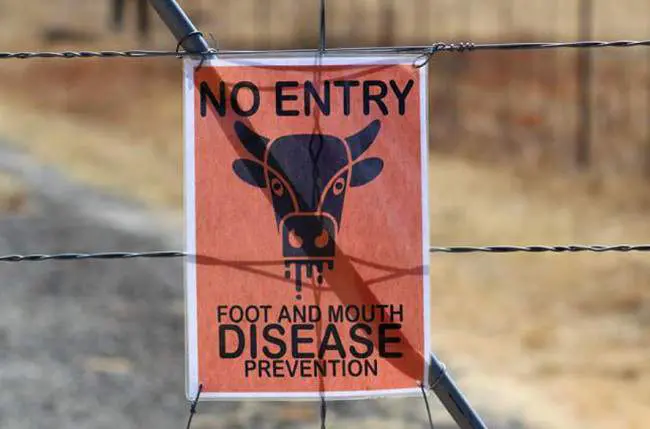Foot-and-Mouth Disease Continues to Plague South African Livestock: Misinformation and Lax Biosecurity Hamper Control Efforts
Foot-and-mouth disease (FMD) remains a persistent challenge for South Africa’s livestock sector, causing recurring outbreaks and significant economic losses. Despite ongoing efforts to combat the disease, its spread continues due to a combination of factors, including misinformation within farming communities and inadequate biosecurity practices. The highly contagious viral disease affects cloven-hoofed animals, primarily cattle, and can have devastating consequences for both commercial and small-scale farmers. Six years after its resurgence in commercial herds, FMD continues to disrupt the industry, highlighting the urgent need for improved control and prevention strategies.
Experts at Beefmaster Group emphasize the difficulty in identifying FMD due to its often subtle symptoms. This, coupled with widespread misinformation, makes controlling the disease particularly challenging. Jaco Liebenberg, Senior Section Manager at Beefmaster Group, stresses that a clear understanding of FMD’s early signs and rapid response protocols is crucial for effective disease management. Farmers play a pivotal role in both early detection and containment, and their awareness and adherence to biosecurity measures are essential for preventing widespread outbreaks.
Animal Health Specialist King Ramokala outlines the key symptoms of FMD, including fever, excessive salivation, and blister formation in the mouth and on the feet. Early detection, within the first 48 hours of symptom onset, is crucial for effective containment. Farmers suspecting FMD in their herds should immediately notify authorities, including local veterinarians and state veterinary services, and isolate potentially infected animals. Restricting animal movement and implementing strict hygiene protocols are critical first steps in preventing further spread.
Biosecurity measures are paramount in minimizing the risk of FMD introduction and spread. Even farms located far from known outbreak areas should restrict access to essential personnel only. Rigorous hygiene protocols, including disinfection of equipment and vehicles, must be implemented. The virus can spread through direct contact with infected animals, as well as through contaminated bodily fluids, including saliva, mucus, feces, milk, and urine. Environmental factors such as cooler temperatures, wind, and mist can also facilitate the virus’s survival and spread. Common biosecurity lapses, such as inadequate hygiene protocols for visitors, failure to quarantine new animals, and insufficient herd surveillance, contribute to the ongoing spread of FMD.
The movement of livestock, particularly through auctions, has been identified as a significant contributor to new FMD outbreaks. Unnecessary animal movement should be avoided. If transport is essential, vehicles must be thoroughly cleaned and disinfected according to official guidelines after each use. In the event of an outbreak, all animal movements must cease immediately.
Regardless of farm size, biosecurity is essential. Smaller producers and communal farmers are urged to prioritize these measures, including hygiene practices, movement restrictions, quarantine protocols for new animals, and proper animal identification. Collaboration between all stakeholders, including farmers, veterinarians, and government agencies, is essential for effective FMD control and eradication. Continued education and awareness campaigns are crucial for dispelling misinformation and promoting best practices within farming communities. By implementing robust biosecurity measures and promptly reporting suspected cases, farmers can play a critical role in protecting their livestock and the broader agricultural industry from the devastating impact of Foot-and-Mouth Disease. Early detection, rapid response, and strict adherence to biosecurity protocols are the cornerstones of effective FMD management.


